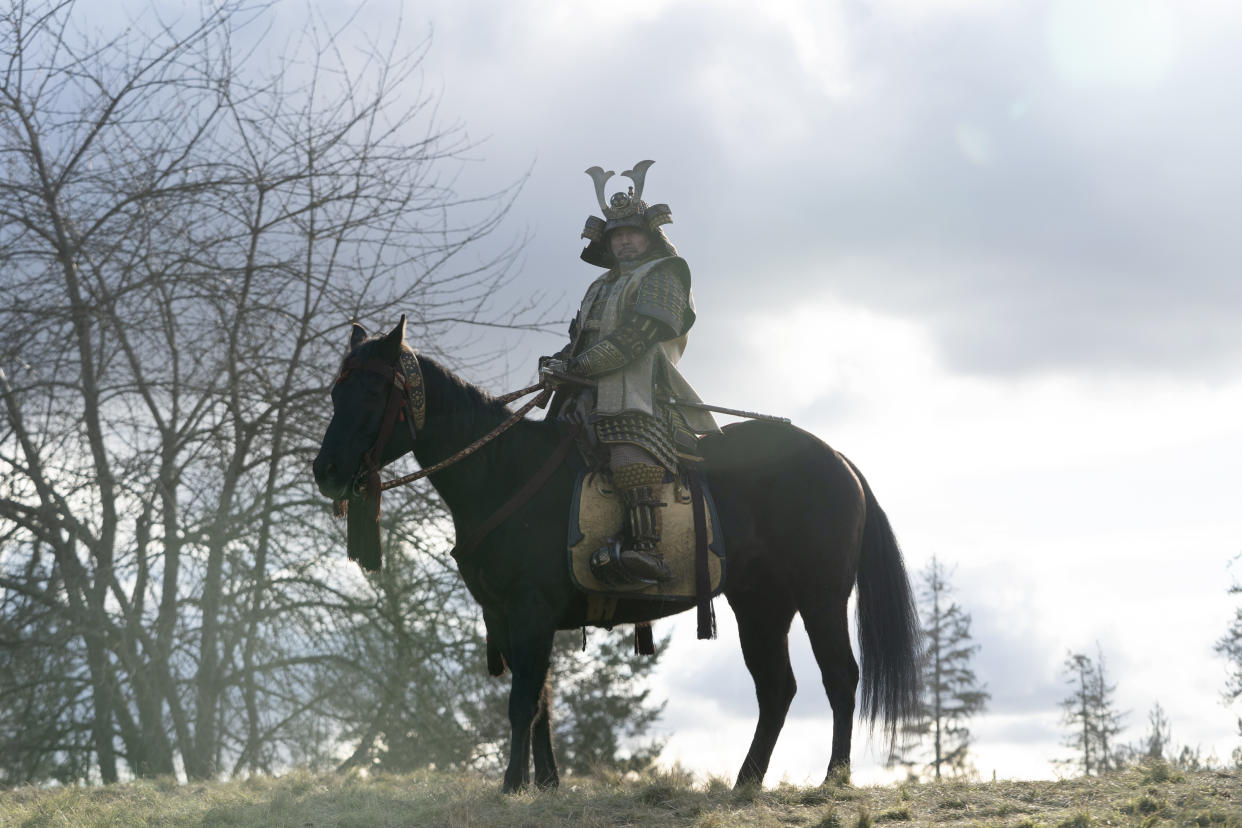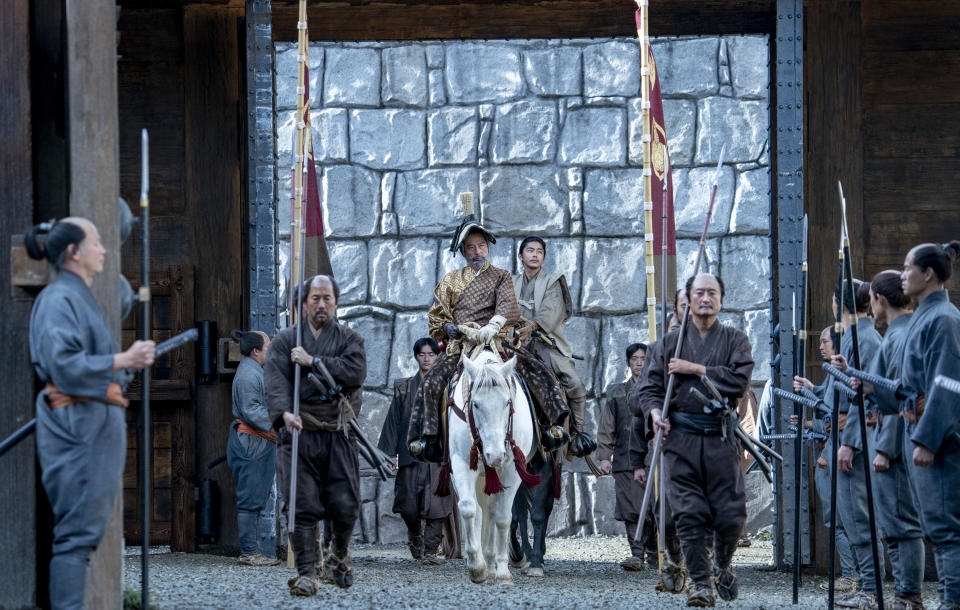Recreating Feudal Japan on ‘Shogun’ Required a Team of Artisans — and a ‘Secret Window’ in Everyone’s Hakama Pants

The length of a movie or TV show’s credits is usually a good indicator of the scale of a production. But going through the credits of FX’s “Shogun,” the scale of the challenge in replicating the culture of feudal Japan during the Sengoku period really hits home; among those listed are a team of kimono technicians and design specialists, historical consultants, period language consultants and interpreters, three different movement advisors for samurai behavior, general background movements, and even period-appropriate sitting and walking attitudes.
The guiding principle for the show’s approach to its historical setting was whether Japanese fans of NHK dramas and Kyoto-style Jidaigeki would raise their eyebrows or accept the look and feel of the series. “I think that’s something we often gloss over when it comes to conversations about representation: bringing those who have lived in this world for a very long time to the table, there’s a side of it where we all feel like this is the right thing to do. But really what it’s about is showing us something that we’ve never seen before,” co-creator Justin Marks told IndieWire.
More from IndieWire
While Western audiences can latch onto shipwrecked English sailor John Blackthorn (Cosmo Jarvis) as he’s tossed into the deadly court intrigue of 16th-century Japan and the plots around whether Lord Toranaga (Hiroyuki Sanada) will take control of the country, everything and everyone else needed to look dramatically correct to the discerning eyes of Japanese audiences. For this, the FX series employed what Sanada described as “the dream team” of Japanese artisans to build out the world of the show. And as a producer on the series, Sanada helped hire them.
“Some of them [are people] I’ve worked with for 30, 40 years in Japan,” Sanada told IndieWire. “Since I was a child actor, I’ve learned about [samurai drama] costumes and props from great masters.”
Great mastery is about craftsmanship, but it’s also about efficiency on set. In addition to bringing in Japanese theater specialists who could teach the Western crew to quick-tie obis (the sashes in which samurai keep their swords) to look impressive on camera but be easy to take on and off, Sanada advised the costume department to create “a secret window” on everyone’s hakama pants, so that all the guys from lead actors to background players could take bathroom breaks that wouldn’t take an extra 30 minutes.
“Initially we didn’t bring that obi tie-er out, and then we were wondering why it was taking five or six hours for 150 background [actors] to show up on set. It’s because, you know, it turns out [tying obis] is really difficult and something that takes people a lifetime to master,” Marks said.
Co-creator Rachel Kondo observed that having artisans steeped in that training makes a difference, even if it’s in the background of shots. “The woman who plays Setsu, Mariko’s [Anna Sawai] lady in waiting, her name is Akiko Kobayashi, and she is in the background as they’re discussing bathing — she glides across the floor, and she is one of our Shosa movement advisors so it makes sense, but she does it in a way that… it’s innate to her. It takes a lifetime of training in Kyoto theater to be able to achieve that,” Kondo told IndieWire.

Jawdropping accuracy on the periphery and well-honed stage trickery in the center is the approach to weapons and armor on “Shogun,” too. Sanada pulled in the same armor team that worked on “The Last Samurai” to prepare the different types of equipment the show would need: “hero” props that look hard, softer and more rubberized stunt armor, and weapons painted metallic are actually rubber wrapped around a bamboo core. And for all of them, “I could say something like ‘this part must be easier to put on and take off,’” Sanada said. “And then they created the perfect [set of armor]. It looks real but it’s easy to wear and move.”
Equally of use (and slightly more creative) is the work of designing specific armor pieces where character storytelling can ultimately edge out technical period accuracy. Sanada collaborated closely with costume designer Carlos Rosario on flourishes that used the language of the period but would set individual characters apart through their armor. The wily Yabushige (Tadanobu Asano) has a distinctive set of shoulder armor (sode) covered in feathers, for instance, while the proud, prickly Buntaro’s (Shinnosuke Abe) helmet has a crest that’s just as sharp as he is.
“It’s East meets West,” Sanada said. “Carlos and I had a great collaboration. Then it was just about checking everything when they’re sewing all the handmade items in the studio; I gave some pointers — a little tighter, a little wider, but they had a great staff.”
As for Toranaga himself, a man who guards his true intentions with a zeal that confounds even the Jesuit priests in Tsukishima, Sanada advises viewers to pay attention to his appreciation for birds and where and when they show up on his clothing. “I love all the Jinbaori, the jacket that sits on top of the samurai armor,” Sanada says. “[There’s a pattern] linking his first war to his last war.”
Episodes 1 and 2 of “Shogun” are now available on FX.
Best of IndieWire
Christopher Nolan Movies, Ranked from 'The Dark Knight' and 'Tenet' to 'Dunkirk' and 'Oppenheimer'
Where to Watch This Week's New Movies, Including 'Argylle' and 'How to Have Sex'
Christopher Nolan's Favorite Movies: 40 Films the Director Wants You to See
Sign up for Indiewire's Newsletter. For the latest news, follow us on Facebook, Twitter, and Instagram.
